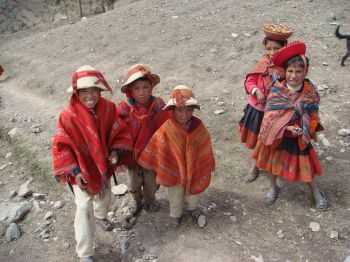Broadcast: News items
Inca research offers a grain of hope for climate change
By: James Hakner
Last updated: Thursday, 30 July 2009

Study of the past holds key to the future survival of Peru.
The findings of an international team of scientists offer a climate-based explanation for the unprecedented growth of the New World's greatest empire: the Inca.
According to Sussex geographer Dr Mick Frogley and a colleague from the French Institute of Andean Studies in Lima, Peru, the meteoric rise of the mighty but short-lived Inca empire in 15th- and 16th-century South America coincided with a sustained rise in temperature attributable to natural climate change.
Their research also highlights the challenges faced by present-day Peru, one of the three countries recently identified by the World Bank as most vulnerable to the negative effects of current, man-made climate change.
Lessons can be learnt from the Inca, say the researchers, in dealing with water demand as Peru's chief water source, the Andean mountain glaciers, continue to shrink during the present period of global warming.
The team analysed seeds and pollen from layers of sediment in a dried-up lake called Marcacocha, located close to the tourist route to Machu Picchu in highland Peru. The abundances and types of microscopic remains revealed a period of marked warming that culminated with the rise of the Inca from 1400 to 1532.
The Inca re-landscaped the Andes with their agricultural terraces. This coincided with a period of climatic warming (that originally began around AD 1100) that allowed people to move further up the cooler slopes of the Andes and productively exploit completely new areas. Sustainable agricultural techniques such as irrigation by glacial waters and tree planting to avoid land erosion allowed the Inca to maximise food production for a rapidly expanding population.
"The Inca were lucky. They were able to exploit rising temperatures during a period of drought," says Mick. "In earlier, cooler times we believe that other cultures may have been wiped out by sustained drought."
The findings suggest that only massive native reforestation and innovative reservoir construction, as practised by the Inca, could offer the climatic and water security necessary to support a rapidly developing modern-day Peru.
"Hence, it all comes down to the water issue," says Dr Frogley. "Peru's glaciers are retreating at quite a pace. What is facing the descendants of the Inca today is another period of aridity. But instead of having to sustain maybe nine million people, the present population is closer to 30 million."
'Putting the rise of the Inca empire within a climatic and land management context' was published on 22 July in the open-access journal Climate of the Past.

